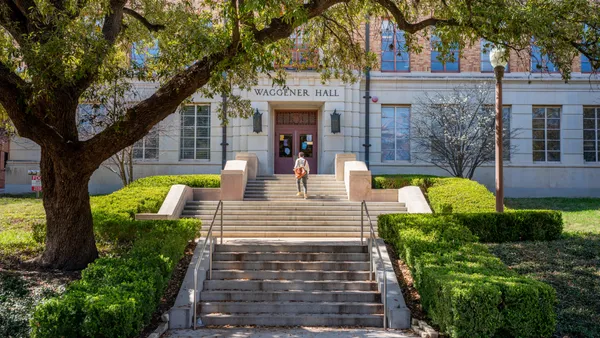Dive Brief:
- Colleges must transform into nationally focused institutions in order to stay relevant, contends a new report from advisory firm Grant Thornton. That means having more than a single physical location, offering consistent services across states and serving students where they're located.
- Although the focus on access in higher ed has sharpened, universities haven't scaled their services to become financially sustainable, wrote Matt Unterman, a principal at Grant Thornton. "Given the challenges facing the higher education sector today, it's time to consider this change in business model," he added.
- Unterman proposed several ways colleges could go national. Some could "go it alone" while others could merge to achieve scale. Institutions may even maintain their brand identities but share a common owner, much in the same way Marriott owns and operates several hotel chains under separate brands.
Dive Insight:
Higher ed is one of the few industries that hasn't moved to a national scale, contends Unterman. "Soon enough, higher education will go the way of the corner drugstore, once seen as a critical local institution," he wrote. "They, like other local establishments, have been replaced by national chains that benefit from economies of scale and consistent quality standards across all of their locations."
Unterman notes many institutions draw from a national and even an international pool of prospective students, and that online education has helped some institutions vastly expand their footprints. Indeed, so-called mega-universities — such as Southern New Hampshire University (SNHU), Western Governors University (WGU) and Arizona State University — have seen enrollment surge as a result of targeting online learners across the nation, The Chronicle of Higher Education noted in a recent report.
However, Unterman argues, a national presence online isn't enough. Few colleges with massive online offerings also provide "complementary on-premise" services in locations nearby their students, which he contends could "significantly enhance their pedagogical utility."
Even so, large online-focused institutions like SNHU and WGU are fundamentally changing the nature of higher education. At the same time, smaller colleges and larger systems alike are scrambling to provide their own online learning options at scale.
Those that don't expand their reach could get left behind, in Unterman's view. Regional colleges, and especially those lacking specialization, are "prime targets to be gobbled up by a national entity with much more appropriate cost structures and economies of scale," he wrote.
Despite Unterman's dire warnings, several groups have argued there are several paths small colleges and public institutions can take to stay relevant under intense budget pressures and changing student demographics.
For one, colleges can differentiate themselves by offering intensive student learning experiences, suggests a recent report from Deloitte's Center for Higher Education Excellence and Georgia Tech's Center for 21st Century Universities. The University of Cincinnati, for instance, offers a co-op program that more than 3,500 students participate in each year.
Other institutions could offer more competency-based programs to help better meet the needs of students and their region's job market, the Deloitte report suggests.
Small liberal arts colleges have several options, according a 2017 white paper by Mary Marcy, president of Dominican University of California. Those include offering more professional programs, adding a signature program or doubling down on the traditional model of liberal arts education. Another option, Marcy noted, is to go the way of SNHU and focus on growing online enrollment.















